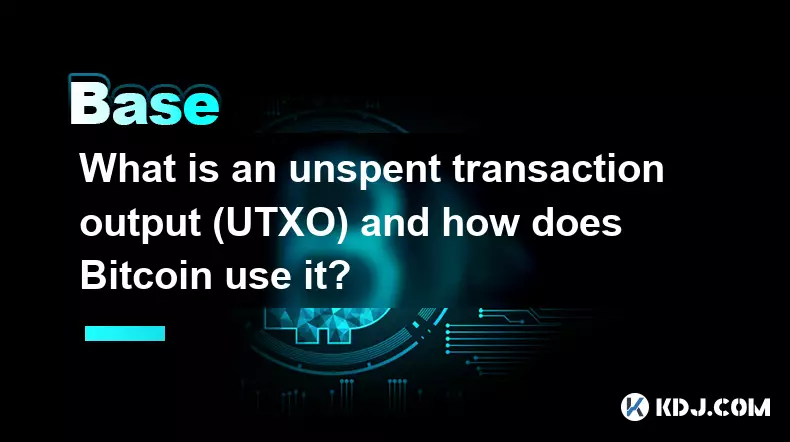-
 bitcoin
bitcoin $95122.959084 USD
-0.06% -
 ethereum
ethereum $3142.532402 USD
-0.28% -
 tether
tether $0.999439 USD
0.01% -
 xrp
xrp $2.209207 USD
-2.80% -
 bnb
bnb $925.395975 USD
0.07% -
 solana
solana $138.662599 USD
-1.73% -
 usd-coin
usd-coin $0.999753 USD
-0.02% -
 tron
tron $0.294100 USD
0.03% -
 dogecoin
dogecoin $0.161321 USD
0.35% -
 cardano
cardano $0.498672 USD
-1.53% -
 hyperliquid
hyperliquid $38.406659 USD
1.34% -
 zcash
zcash $679.663571 USD
5.44% -
 bitcoin-cash
bitcoin-cash $501.381807 USD
3.53% -
 chainlink
chainlink $13.975571 USD
-0.64% -
 unus-sed-leo
unus-sed-leo $9.166130 USD
-0.37%
What is Proposer-Builder Separation (PBS) and how will it change Ethereum?
Proposer-Builder Separation (PBS) enhances Ethereum’s decentralization by splitting block creation and proposal, allowing all validators to fairly earn MEV rewards.
Nov 15, 2025 at 04:00 pm

Understanding Proposer-Builder Separation (PBS)
1. Proposer-Builder Separation, commonly known as PBS, is a critical architectural upgrade within the Ethereum network designed to address centralization risks associated with block production. After the Merge, Ethereum transitioned to a proof-of-stake consensus mechanism where validators are responsible for proposing and attesting to blocks. However, this led to the emergence of sophisticated entities known as builders who specialize in maximizing transaction inclusion profits through practices like MEV extraction.
2. Under traditional block production, validators would receive bundles of transactions from searchers or bots and include them directly into blocks they propose. This allowed validators with advanced infrastructure to gain an unfair advantage, potentially leading to centralization. PBS introduces a structural division: the role of constructing full blocks is separated from the role of proposing them.
3. In the PBS model, specialized off-chain builder entities create fully formed blocks and submit them to proposers—the randomly selected validators—through a competitive bidding process. The proposer then selects the highest-paying valid block without knowing its contents, reducing their ability to manipulate transaction ordering for personal gain.
4. This separation enhances decentralization by allowing smaller validators to participate fairly. Even if a validator lacks the computational resources to optimize transaction bundles, they can still earn rewards by selecting blocks from professional builders. It effectively democratizes access to MEV revenue while preserving network security.
5. PBS was initially implemented in a partial form via services like Flashbots’ MEV-Boost, which allows validators to outsource block building. Although not yet fully integrated at the protocol level, this interim solution has become widely adopted, with the majority of Ethereum blocks currently being produced using MEV-Boost relays.
The Impact of PBS on Ethereum’s Decentralization
1. One of the primary motivations behind PBS is to prevent the centralization of block production. Without separation, large staking pools could vertically integrate by running their own proprietary builders, gaining disproportionate influence over transaction inclusion and network performance.
2. By enabling an open market for block construction, PBS fosters competition among independent builders. This competitive environment drives innovation and efficiency while preventing any single entity from dominating the block-building process.
3. The introduction of PBS significantly reduces the barrier to entry for individual validators, ensuring that even small-scale participants can remain economically viable. Validators no longer need to invest heavily in complex infrastructure to extract MEV; instead, they rely on external bids, promoting a more distributed validator set.
4. Additionally, PBS mitigates censorship risks when paired with mechanisms like proposer boosting and distributed relay architectures. Multiple geographically dispersed relays ensure that no single point of failure or control exists in the block submission pipeline.
5. Over time, this architecture strengthens Ethereum’s resilience against coercion and regulatory pressure. Since proposers do not construct blocks themselves, they cannot be easily forced to exclude specific transactions, enhancing censorship resistance across the network.
How PBS Influences MEV and Network Security
1. Maximal Extractable Value (MEV) refers to the profit that can be extracted by reordering, inserting, or censoring transactions within a block. Prior to PBS, MEV posed a systemic risk, as it incentivized validators to prioritize personal gains over network fairness.
2. PBS does not eliminate MEV but rather internalizes it into a transparent marketplace. Builders compete to offer the highest bid for the right to build a block, and these payments flow back to validators through tips. This transforms MEV into a predictable revenue stream rather than an opaque advantage held by well-resourced actors.
3. By making MEV extraction visible and competitive, PBS reduces information asymmetry and prevents covert manipulation of the transaction mempool. It also encourages ethical MEV strategies, such as fair-share models and MEV smoothing across validator sets.
4. From a security standpoint, PBS helps protect against long-range attacks and bribery attempts. Because block contents are sealed before reaching the proposer, attackers cannot easily predict or interfere with the final block structure, increasing the cost of successful exploits.
5. Furthermore, the modular design introduced by PBS lays the foundation for future scalability solutions like proposer slot auctions and data availability sampling. These advancements depend on a clean separation between proposal and construction roles, making PBS a prerequisite for next-generation Ethereum upgrades.
Frequently Asked Questions
What problem does PBS solve in Ethereum’s current architecture?
PBS addresses the growing centralization risk caused by the complexity and profitability of block construction. As MEV opportunities expanded, only well-funded validators with advanced infrastructure could efficiently capture these profits. This threatened to concentrate power among a few dominant players. PBS levels the playing field by allowing all validators to benefit from professional block builders through a transparent auction system.
Is PBS already active on Ethereum?
PBS is currently operating in a proto-form through MEV-Boost, a middleware solution that enables validators to accept externally built blocks. While this provides many of the benefits of PBS, it remains an extraprotocol layer. Full protocol-level PBS is expected to be integrated with future upgrades like EIP-4844 and the Verge, providing native support and enhanced security guarantees.
Can PBS reduce negative impacts of MEV on users?
PBS itself does not directly reduce harmful MEV practices such as frontrunning or sandwich attacks. However, it creates a framework where MEV can be better monitored, regulated, and redistributed. Solutions like SUAVE aim to work alongside PBS to enforce ethical ordering rules and return value to users, leveraging the transparency that PBS enables.
Does PBS make Ethereum slower or less efficient?
No, PBS improves efficiency by enabling specialized entities to focus exclusively on optimizing block construction. These builders use advanced algorithms and real-time market data to pack transactions more effectively than general-purpose validators could. The result is higher throughput and better utilization of block space without compromising decentralization.
Disclaimer:info@kdj.com
The information provided is not trading advice. kdj.com does not assume any responsibility for any investments made based on the information provided in this article. Cryptocurrencies are highly volatile and it is highly recommended that you invest with caution after thorough research!
If you believe that the content used on this website infringes your copyright, please contact us immediately (info@kdj.com) and we will delete it promptly.
- $EVA Token, Airdrop, Powday Farm: What's the Buzz in the Metaverse?
- 2025-11-17 02:50:02
- BTC Amsterdam 2025 & Stablecoin Growth: A Bullish Outlook?
- 2025-11-17 02:45:01
- December Rate Cut Odds: A NYC Perspective on the Fed's Next Move
- 2025-11-17 02:45:01
- Xenea Wallet Daily Quiz: Your Fast Track to Earning Crypto
- 2025-11-17 02:40:02
- Web3 Gaming Economies: Bridging Liquidity Gaps with Innovation
- 2025-11-17 02:40:02
- Zero Knowledge Proof, Crypto Presales, and No KYC: A New Era of Inclusive Finance
- 2025-11-17 00:10:01
Related knowledge

What is the difference between a transparent and a shielded transaction?
Nov 10,2025 at 05:59pm
Understanding Transparent Transactions in Cryptocurrency1. Transparent transactions are the standard form of transaction on most public blockchains li...

What is a "crypto airdrop farmer" and what strategies do they use?
Nov 09,2025 at 03:39pm
What Is a Crypto Airdrop Farmer?1. A crypto airdrop farmer is an individual who actively participates in blockchain projects to qualify for free token...

What is an unspent transaction output (UTXO) and how does Bitcoin use it?
Nov 12,2025 at 01:40am
Understanding the Concept of Unspent Transaction Output (UTXO)1. An Unspent Transaction Output, commonly referred to as UTXO, is a fundamental compone...

What is a "governance attack" and how can a DAO be compromised?
Nov 14,2025 at 05:59am
Understanding Governance Attacks in Decentralized Autonomous Organizations1. A governance attack occurs when an individual or group gains disproportio...

How do you track a crypto portfolio across multiple wallets and chains?
Nov 12,2025 at 04:19pm
The Evolution of Decentralized Exchanges in the Crypto Ecosystem1. Decentralized exchanges (DEXs) have transformed how users trade digital assets by r...

What is a "rug pull" clause in a smart contract and how can you spot it?
Nov 14,2025 at 11:40pm
Understanding the Concept of a Rug Pull in Decentralized Finance1. A rug pull refers to a malicious act in the cryptocurrency space where developers a...

What is the difference between a transparent and a shielded transaction?
Nov 10,2025 at 05:59pm
Understanding Transparent Transactions in Cryptocurrency1. Transparent transactions are the standard form of transaction on most public blockchains li...

What is a "crypto airdrop farmer" and what strategies do they use?
Nov 09,2025 at 03:39pm
What Is a Crypto Airdrop Farmer?1. A crypto airdrop farmer is an individual who actively participates in blockchain projects to qualify for free token...

What is an unspent transaction output (UTXO) and how does Bitcoin use it?
Nov 12,2025 at 01:40am
Understanding the Concept of Unspent Transaction Output (UTXO)1. An Unspent Transaction Output, commonly referred to as UTXO, is a fundamental compone...

What is a "governance attack" and how can a DAO be compromised?
Nov 14,2025 at 05:59am
Understanding Governance Attacks in Decentralized Autonomous Organizations1. A governance attack occurs when an individual or group gains disproportio...

How do you track a crypto portfolio across multiple wallets and chains?
Nov 12,2025 at 04:19pm
The Evolution of Decentralized Exchanges in the Crypto Ecosystem1. Decentralized exchanges (DEXs) have transformed how users trade digital assets by r...

What is a "rug pull" clause in a smart contract and how can you spot it?
Nov 14,2025 at 11:40pm
Understanding the Concept of a Rug Pull in Decentralized Finance1. A rug pull refers to a malicious act in the cryptocurrency space where developers a...
See all articles

























![Coin Master Hack Spins 2025 ✅ Coin Master Free Spins[ Android _ iOS ] [LINK IN COMMENT] Coin Master Hack Spins 2025 ✅ Coin Master Free Spins[ Android _ iOS ] [LINK IN COMMENT]](/uploads/2025/11/16/cryptocurrencies-news/videos/6919c627821e7_image_120_90.webp)
















































